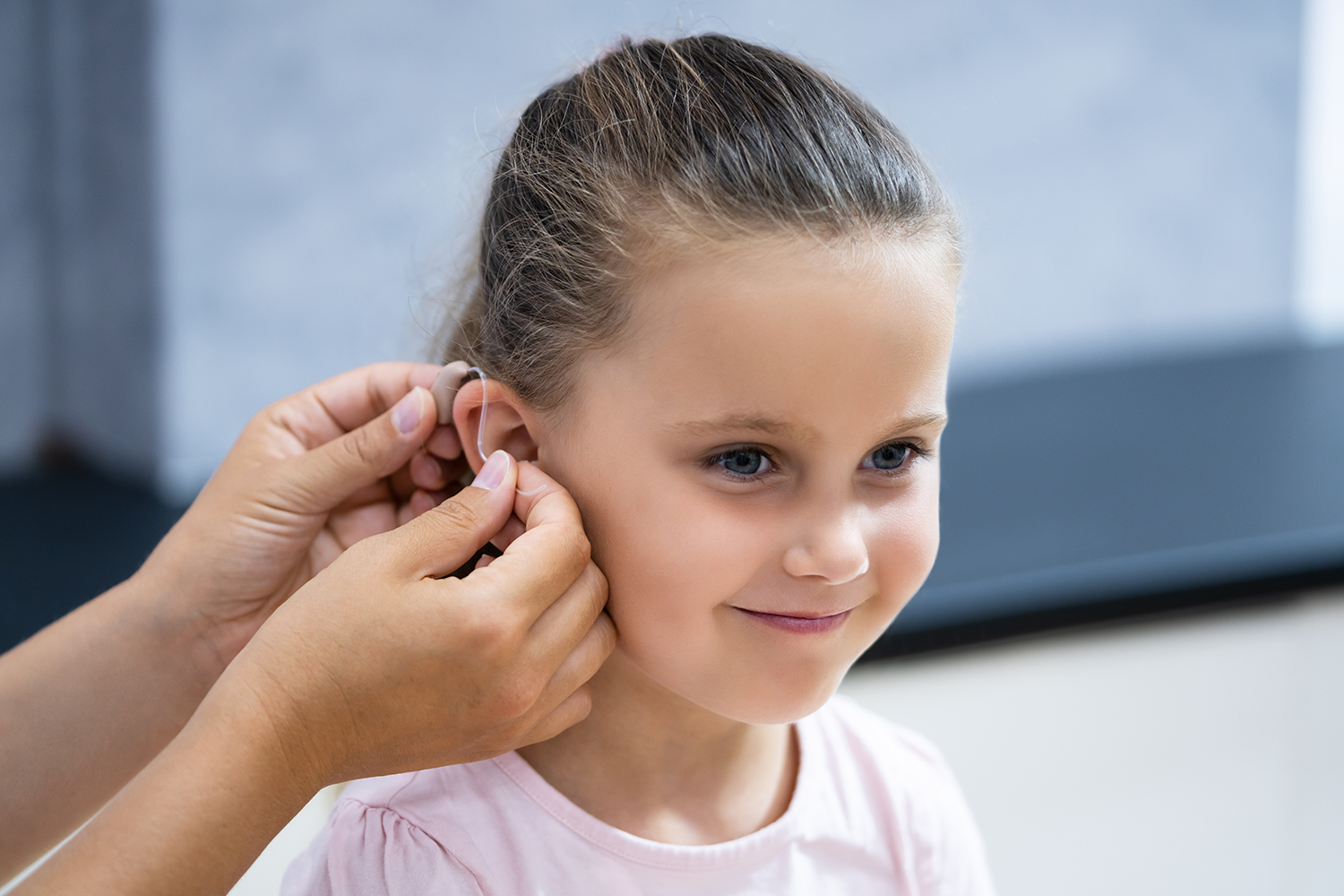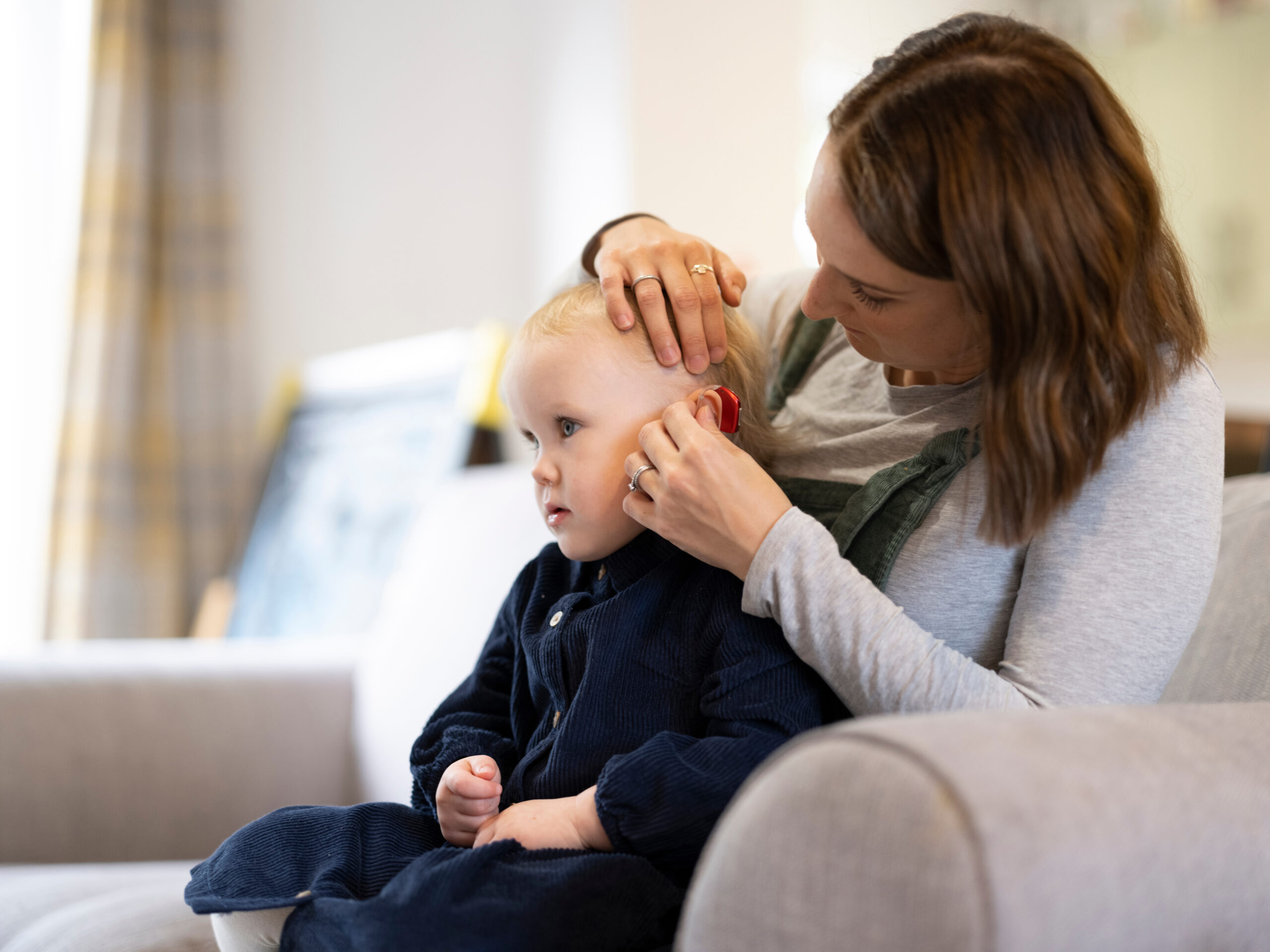Hearing loss may sound like a daunting diagnosis, but fortunately, its effects can be remedied. A range of hearing technologies are available, becoming increasingly advanced and adapting to the needs of hearing loss.
Hearing care professionals, practitioners and experts constantly work to identify and prevent hearing loss on time, as well as finding the most suitable hearing instruments for patients.
Hearing aids
Hearing aids help people with hearing loss hear better. Placed in or behind the ear, hearing aids are a constantly evolving technology, and are nowadays in fact small, high-tech computers which are being refined to provide an ever better artificial reproduction of natural human hearing.
The uptake of hearing aids is on the rise, thanks to a growing share of the population taking action and seeking professional, high quality hearing care. But despite significant progress in recent years, more than 60% of persons living with hearing loss still do not receive the care they need. Therefore, with the right enabling environment, even more people could benefit from proper hearing care.


Benefits of hearing aids
Persons using hearing technologies self-report significant improvements in their daily lives, for example:
Over 90% find hearing aids useful in their jobs.
Two out of three have greater confidence moving in public spaces.
Less stress, physical and mental exhaustion, fewer depressive episodes.
Higher participation in group activities: Around 70% of users say their hearing aids help them manage situations in a difficult listening environment such as conversations in large groups, being on the telephone, or in a large public space.
Types of hearing aids
Different types of hearing aids are available, but before choosing the most suitable kind, you should firstly ask yourself a few questions: What is the type of hearing loss am I dealing with, how severe is it ,and what kind of lifestyle am I following? These factors are critical to finding which type of hearing aid is right for you. Following a hearing test, a hearing health professional can determine which kind of hearing aid will be the most beneficial and convenient for your needs.
There are three main types of hearing aids: Behind-the-ear (BTE), In-the-ear (ITE), and Receiver-in-the-ear (RITE).
Implants
Hearing implants are used when a person has hearing loss, but would not benefit from the sound amplification of hearing aids. This can be the case with a damaged or non-existent auditory nerve or for those who for some other reason are unable to wear hearing aids, such as difficulty inserting the ear mould or inability to cope with signals when surrounded by noise.
Hearing implants are advanced hearing solutions typically implanted through surgery. They bypass damaged portions of the ear and directly stimulate the auditory nerve. One part of the system is implanted (the implant or internal part) and the other part is an externally placed sound processor/audio processor that sits on the head.
Implants are suitable for any age group with severe hearing problems. Typically, children can receive cochlear implants from around 12 months (or under special circumstances even earlier). For adults, there is no age limit.


Treating hearing loss in children
Hearing loss can occur at any stage of life. It can start during adolescence, the first years of childhood, even before birth. The factors are diverse, such as genetics, prenatal or perinatal complications (e.g. intrauterine infections, birth asphyxia, low-birth weight, etc.), other chronic ear diseases, noise exposure, or unsafe listening habits.
Hearing loss can be especially detrimental for children
Children’s brains develop quickly, and sound inputs are critical for the development of the brain’s neural pathways for hearing, speech and language. Untreated hearing loss strongly affects a child’s ability to understand, speak, learn, socialise and communicate. If a child is diagnosed with hearing loss, it is extremely important that they start using hearing aids as soon as possible, and for as much of the day as possible


All major manufacturers have developed different types of hearing aids specifically for children
From babies, infants and toddlers to school children and teenagers.
Choosing the right hearing aid (type, size and style) depends on the type and degree of a child’s hearing loss. The choice should always be made in close dialogue with hearing professionals. Most hearing aids for children are behind-the-ear hearing aids (BTEs) with an ear mould in the ear canal, so that the components can be exchange quickly as the child’s ears grow.
For smaller children, a hearing aid should be easy to use.
The hearing aids, including the earmolds, must be robust and able to withstand the impact of normal playing, but also be resistant to dust and moisture.
Some children who use hearing aids may also need help from a speech therapist and other health professionals, especially if the hearing loss is more severe or profound.

Connected and assistive listening
Most digital hearing aids let you connect directly or indirectly to other electronic devices. You can then use assistive listening devices to improve your hearing in different settings.
The available solutions depend on the hearing aid manufacturer and the specific hearing aid.

